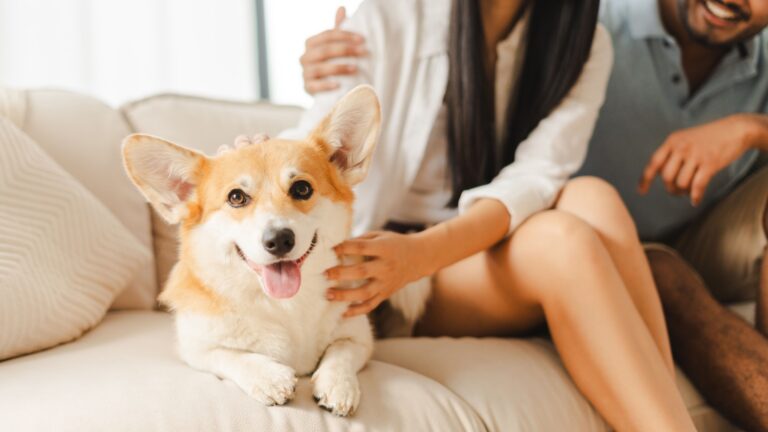7 Health Risks For Overweight Dogs (And 10 Easy Ways To Help Them Slim Down)
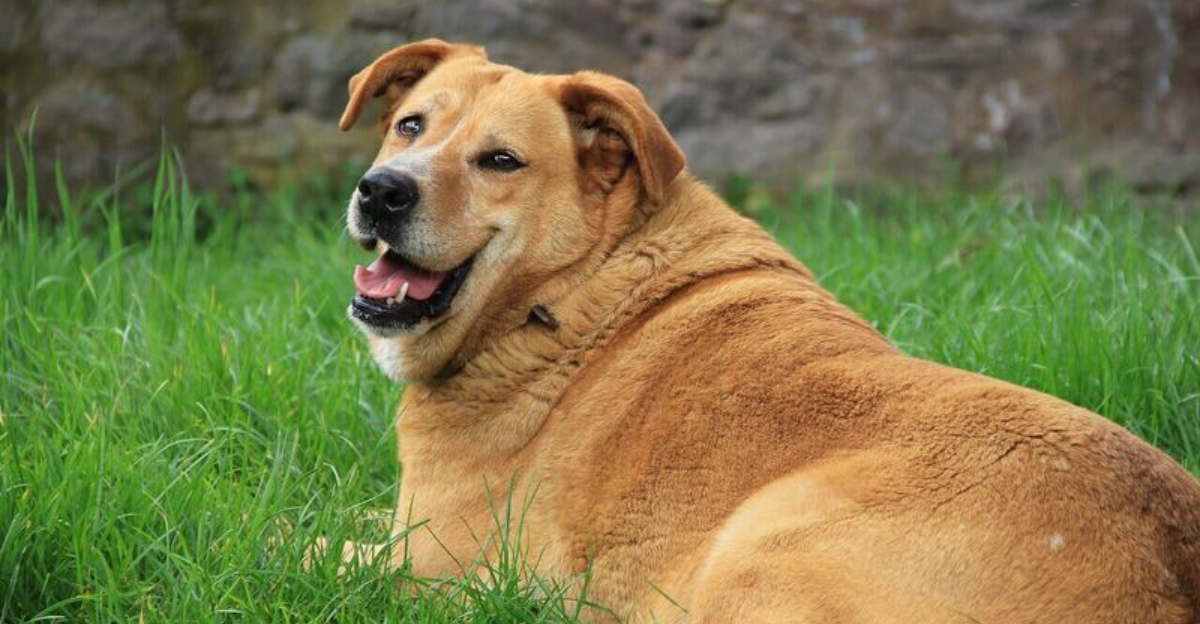
Extra pounds on your pooch aren’t just making those puppy eyes harder to resist – they’re a serious health concern. Just like in humans, obesity in dogs leads to a range of health problems that can shorten their lives and reduce their quality of life.
Fortunately, with some simple changes to diet and activity, you can help your furry friend shed those extra pounds and live a happier, healthier life.
1. Joint Pain And Mobility Issues

Those extra pounds put tremendous strain on your dog’s joints. Imagine carrying a heavy backpack everywhere you go – that’s how your chunky pup feels all day!
Over time, this weight causes wear and tear on cartilage, leading to painful arthritis. Many overweight dogs struggle to climb stairs or jump onto furniture they once easily managed.
2. Increased Risk Of Diabetes

Excess fat affects how your dog’s body processes insulin. When a dog carries too much weight, their cells become resistant to insulin signals, causing blood sugar levels to skyrocket.
This can lead to diabetes, requiring insulin injections and careful monitoring. The symptoms often develop gradually: excessive thirst, frequent urination, and unexpected weight loss despite increased appetite.
3. Heart And Lung Problems

Fat doesn’t just sit on your dog’s body – it actively affects internal organs. Extra weight forces the heart to work harder with each beat, potentially leading to heart disease or failure.
Breathing becomes labored as fat compresses the chest cavity. You might notice your dog panting excessively after minimal activity or struggling to catch their breath on short walks.
4. Decreased Lifespan

Studies show that overweight dogs live significantly shorter lives – sometimes by up to 2.5 years! That’s a huge chunk of precious time with your furry companion.
Obesity accelerates aging processes in dogs, just as it does in humans. The compounding effects of multiple health issues take their toll, reducing both quality and quantity of life for pudgy pooches.
5. Increased Cancer Risk

Fat tissue isn’t just passive – it produces hormones and inflammatory compounds that can promote tumor growth. Research has linked obesity in dogs to higher rates of certain cancers.
Overweight female dogs who haven’t been spayed face particularly high risks of mammary tumors. The connection between excess weight and cancer gives pet parents yet another compelling reason to help their dogs maintain healthy weight.
6. Skin And Coat Problems
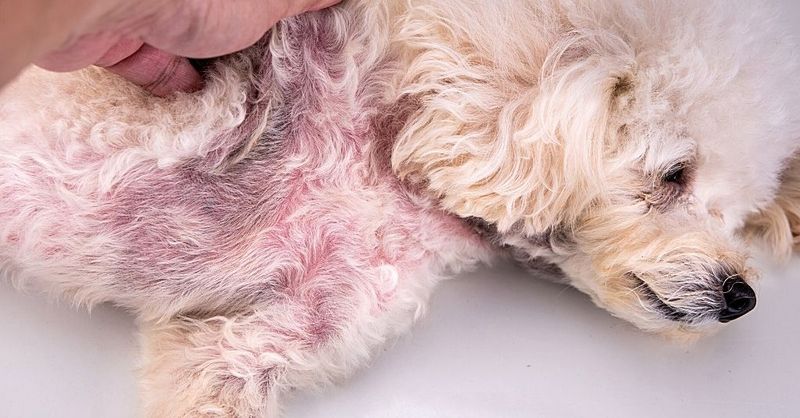
Chubby dogs often can’t properly groom themselves, especially in hard-to-reach areas where skin folds develop. These warm, moist folds become perfect breeding grounds for yeast and bacteria.
The result? Uncomfortable skin infections with redness, odor, and itching. Additionally, overweight dogs frequently develop dry, dull coats as their bodies struggle to distribute natural oils properly.
7. Digestive And Liver Issues

Excess fat infiltrates your dog’s liver cells, leading to a condition called hepatic lipidosis. This fatty liver disease impairs normal function and can cause serious health complications.
Overweight dogs also experience more frequent digestive problems like constipation, gas, and acid reflux. The extra abdominal fat puts pressure on the digestive tract, making normal processes more difficult.
8. Measure Food Portions Precisely
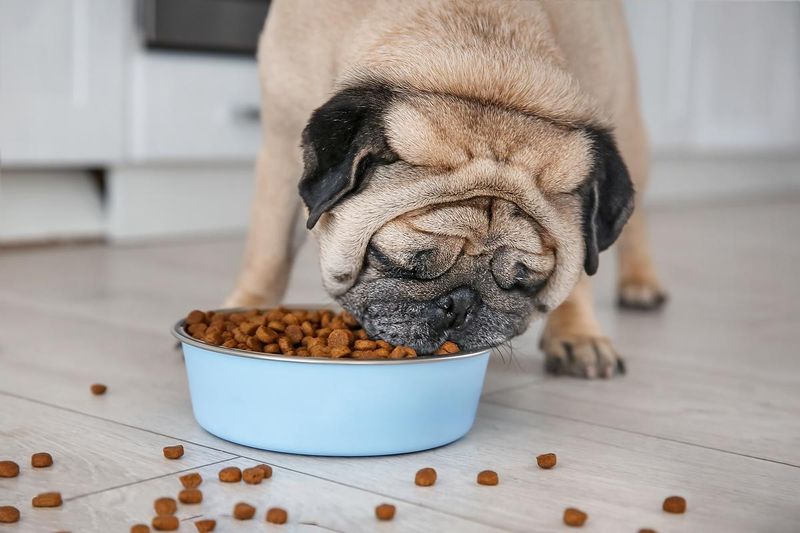
Eyeballing your dog’s food is a recipe for overfeeding. Those “just a little extra” scoops add up fast! Invest in a simple measuring cup or kitchen scale.
Follow feeding guidelines on packaging, but remember they’re starting points. Your dog’s specific needs may vary based on age, activity level, and metabolism. Most owners are shocked to see what a proper portion actually looks like!
9. Cut Back On Treats

Those puppy dog eyes are hard to resist, but treats can sabotage weight loss efforts! Many commercial treats pack surprising calorie counts – some equivalent to a human eating a hamburger.
Try replacing high-calorie treats with healthier options like baby carrots, green beans, or apple slices. Remember: treats should make up no more than 10% of your dog’s daily caloric intake.
10. Increase Daily Walk Time
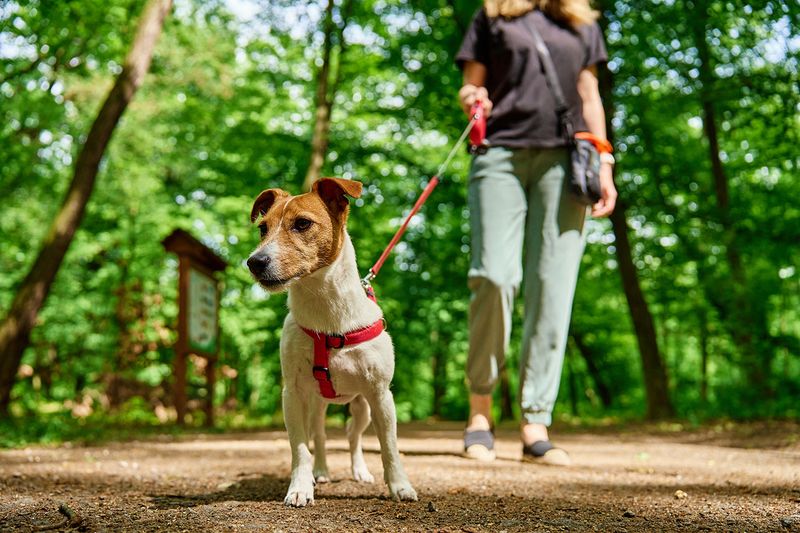
Walking is perfect exercise for overweight dogs – low impact but effective for burning calories. Start with what your dog can handle, even if it’s just 5-10 minutes twice daily.
Gradually increase duration as fitness improves. The mental stimulation from exploring new routes keeps walks interesting for both of you. Remember: consistency trumps intensity when starting a new exercise routine.
11. Try Swimming For Joint-Friendly Exercise

Water workouts provide excellent cardiovascular benefits without stressing painful joints. The buoyancy supports your dog’s weight, making movement easier and more comfortable.
Many overweight dogs who resist walking will happily paddle around a pool, lake, or even a kiddie pool in the backyard. Just 5-10 minutes of swimming equals a much longer walk in terms of energy expenditure.
12. Play Interactive Games
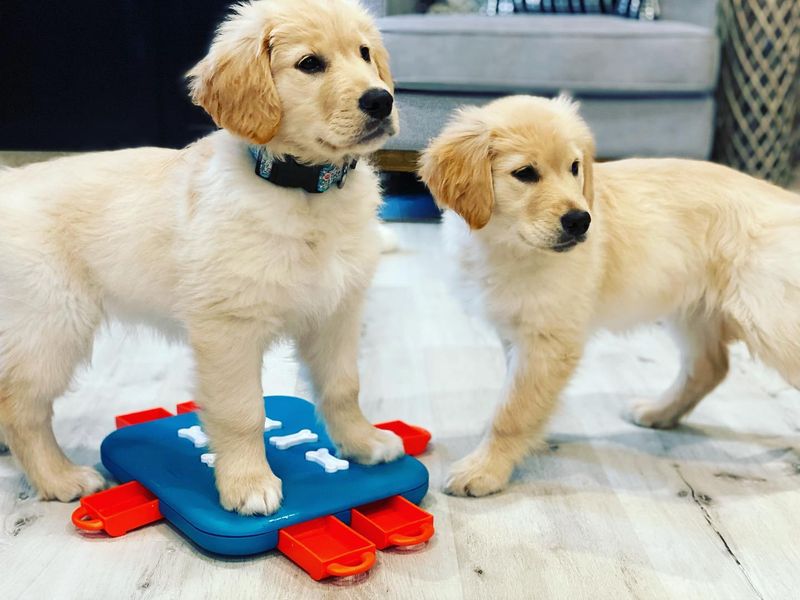
Exercise doesn’t have to mean structured workouts! Engage your dog with indoor games like hide-and-seek with toys or gentle tug-of-war sessions.
Puzzle toys that dispense kibble make your dog work physically and mentally for food. Even a simple game of rolling a ball down a hallway gets your dog moving without feeling like exercise.
13. Switch To Weight Management Food
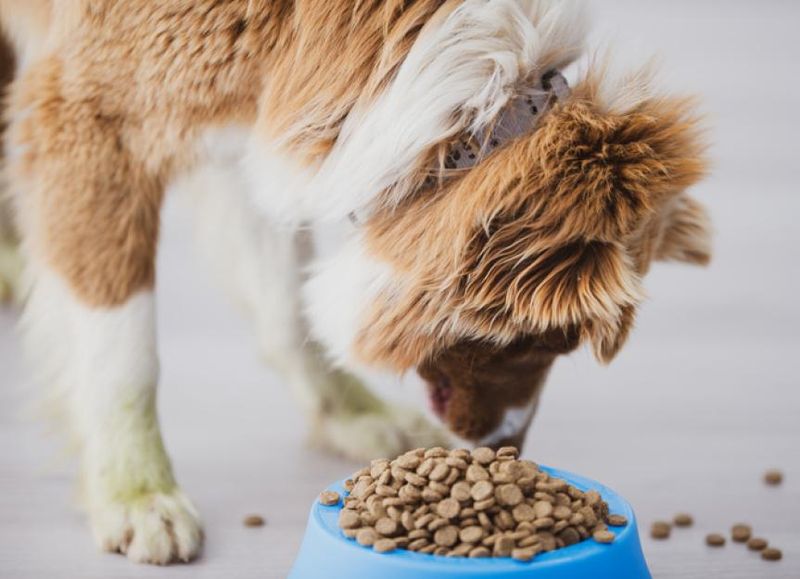
Specially formulated weight management foods provide balanced nutrition with fewer calories. These foods typically contain more fiber to help your dog feel full despite eating less.
Look for options with lean protein sources listed as first ingredients. Make the transition gradually over 7-10 days to avoid digestive upset. Many dogs actually prefer the taste of these formulas once they adjust!
14. Add Vegetables To Meals
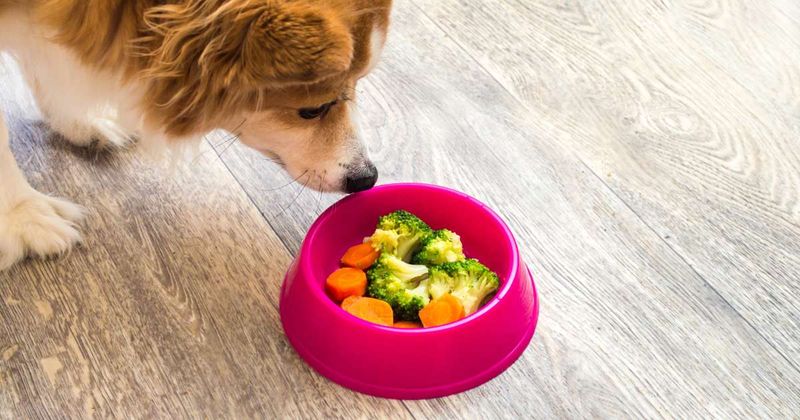
Bulk up meals without adding calories by mixing in green beans, carrots, or pumpkin. These fiber-rich veggies help your dog feel satisfied while consuming fewer calories overall.
Start with small amounts – about a tablespoon for small dogs or 1/4 cup for larger breeds. Most dogs enjoy the variety in texture and taste. Just avoid onions, garlic, and other toxic vegetables.
15. Use A Slow-Feeder Bowl
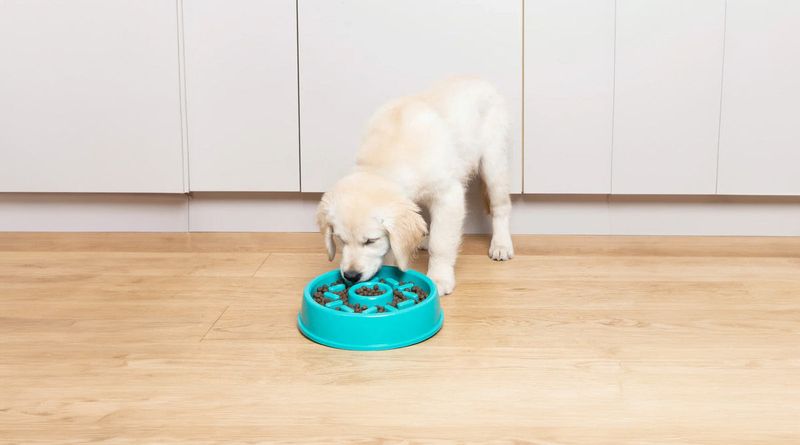
Dogs who gobble their food often eat too much before their brains register fullness. Slow-feeder bowls have ridges or maze-like patterns that force your dog to work for each bite.
This slows consumption considerably, giving the satiety signals time to kick in. As a bonus, these bowls provide mental stimulation and reduce risks of bloat, especially in larger breeds.
16. Schedule Regular Weigh-Ins
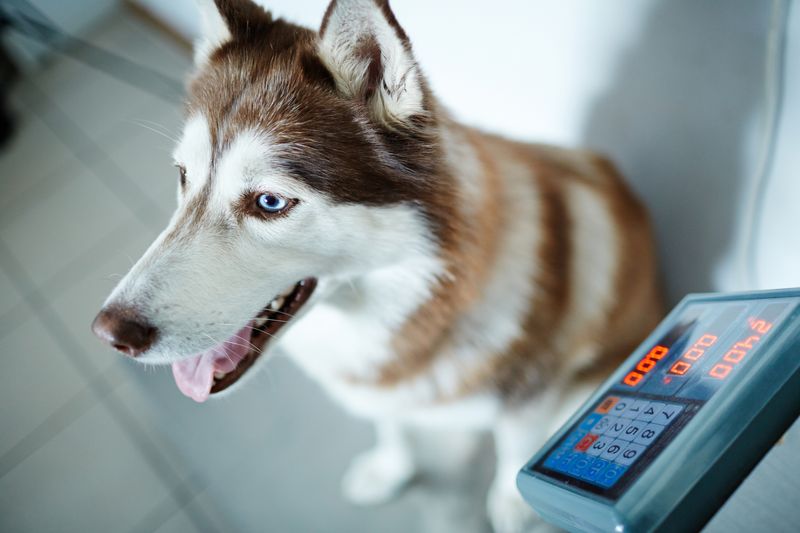
Monitoring progress keeps you accountable and helps adjust the weight loss plan as needed. Aim to weigh your dog at the same time each week, ideally on the same scale.
Record weights in a journal or app to track trends. Healthy weight loss is gradual – about 1-2% of body weight weekly. Celebrate small victories! Even a half-pound loss represents significant progress for smaller dogs.
17. Enlist The Whole Family

Weight loss efforts fail when one family member sneaks treats or overfeeds. Hold a family meeting to ensure everyone understands the health risks and agrees to the new feeding routine.
Create a feeding chart so everyone knows who fed the dog and when. Redirect the urge to show love through food by encouraging extra playtime or belly rubs instead.



